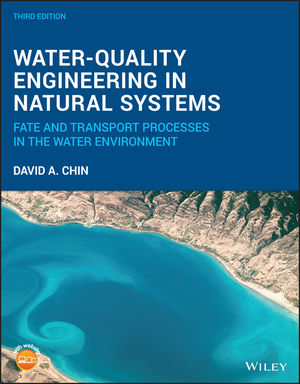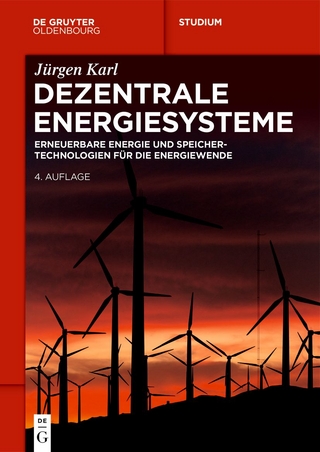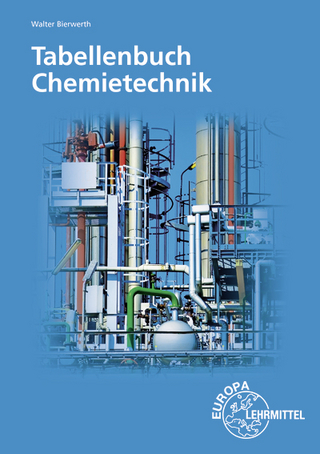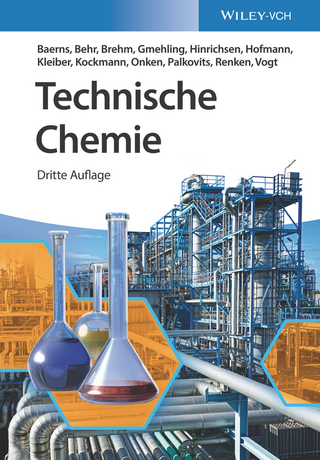
Water-Quality Engineering in Natural Systems
Wiley-Blackwell (Verlag)
978-1-119-53202-6 (ISBN)
Key distinguishing features of this book include: detailed coverage of the science behind water-quality regulations, state-of-the-art methods for calculating total maximum daily loads (TMDLs) for the remediation of impaired waters, modeling and control of nutrient levels in lakes and reservoirs, design of constructed treatment wetlands, design of groundwater remediation systems, design of ocean outfalls, control of oil spills in the ocean, and the design of systems to control the quality of surface runoff from watersheds into their receiving waters. In addition, the entire book is updated to provide the latest advances in the field of water-quality control. For example, concepts such as mixing zones are expanded to include physical nature and regulatory importance of mixing zones, practical aspects of outfall and diffuser design are also included, specific details of water-quality modeling are updated to reflect the latest developments on this topic, and new findings relating to priority and emerging pollutants are added.
David A. Chin, PhD, is Professor of Civil and Environmental Engineering at the University of Miami as well as a registered Professional Engineer. Dr. Chin has published extensively, with important contributions on the fate and transport of contaminants in rivers, groundwater, oceans, and watersheds. His research interests also extend to wetland hydrology and vadose-zone hydrology. Dr. Chin is a recipient of the prestigious Collingwood Prize awarded by the American Society of Civil Engineers.
1 Introduction 1
1.1 Background 1
1.2 Sources of Water Pollution 3
1.2.1 Point Sources 3
1.2.1.1 Domestic wastewater discharges 3
1.2.1.2 Sanitary sewer over ows 4
1.2.1.3 Combined sewer over ows 4
1.2.1.4 Stormwater discharges 5
1.2.1.5 Industrial discharges 5
1.2.1.6 Spills 5
1.2.2 Nonpoint Sources 6
1.2.2.1 Agricultural runoff 6
1.2.2.2 Livestock 7
1.2.2.3 Urban runoff 7
1.2.2.4 Landlls 8
1.2.2.5 Recreational activities 8
1.3 Control of Water Pollution 8
2 Water Quality 11
2.1 Introduction 11
2.2 Physical Measures 11
2.2.1 Flow Conditions 12
2.2.2 Substrate 14
2.2.3 In-Stream Habitat 15
2.2.4 Riparian Habitat 16
2.2.5 Thermal Pollution 17
2.3 Chemical Measures 17
2.3.1 Dissolved Oxygen 18
2.3.2 Biochemical Oxygen Demand 21
2.3.3 Suspended Solids 24
2.3.4 Nutrients 25
2.3.4.1 Nitrogen 26
2.3.4.2 Phosphorus 28
2.3.5 Metals 29
2.3.6 Synthetic Organic Chemicals 30
2.3.6.1 Pesticides 30
2.3.6.2 Volatile organic compounds 31
2.3.7 Radionuclides 31
2.3.8 pH 32
2.4 Biological Measures 32
2.4.1 Human Pathogenic Microorganisms 33
2.4.2 Indicator Organisms 39
2.4.3 Biological Integrity 43
Problems 44
3 Fundamentals of Fate and Transport 47
3.1 Introduction 47
3.2 The Advection-Diffusion Equation 47
3.2.1 Nondimensional Form 52
3.2.2 Transformations of the Diffusion Equation 54
3.2.2.1 Conservative tracers 54
3.2.2.2 Non-conservative tracers with rst-order decay 55
3.2.3 Moment Property of the Diffusion Equation 56
3.3 Fundamental Solutions of the Advection-Diffusion Equation 58
3.3.1 Advection and Diffusion in One Dimension 58
3.3.1.1 Spatially and temporally distributed sources 62
3.3.1.2 Impermeable boundaries 67
3.3.1.3 Continuous plane source 71
3.3.2 Advection and Diffusion in Two-Dimensions 77
3.3.2.1 Spatially and temporally distributed sources 78
3.3.2.2 Continuous line source in owing environment 79
3.3.2.3 Continuous plane sources 81
3.3.3 Advection and Diffusion in Three-Dimensions 84
3.3.3.1 Spatially and temporally distributed sources 86
3.3.3.2 Plane source 86
3.3.3.3 Instantaneous point source in shear ow 87
3.3.3.4 Continuous point source with constant diffusion coefficient 89
3.3.3.5 Continuous point source with variable diffusion coefficient 94
3.3.3.6 Instantaneous line source 95
3.3.3.7 Instantaneous volume source 96
3.4 Advection and Diffusion of Heat 97
3.5 Transport of Suspended Particles 98
3.6 Fate and Transport of Microorganisms in Natural Waters 101
3.7 Turbulent Diffusion 102
3.7.1 Relationship of Turbulent Diffusion Coefficient to Velocity Field 103
3.7.2 Eulerian Approximation 106
3.8 Dispersion 110
Problems 116
4 Rivers and Streams 127
4.1 Introduction 127
4.2 Transport Processes 130
4.2.1 Initial Mixing 130
4.2.2 Longitudinal Dispersion 138
4.2.2.1 Field measurement 139
4.2.2.2 Empirical estimates 142
4.3 Models of Spills 146
4.3.1 Substances with First-Order Decay 146
4.3.1.1 Instantaneous release 147
4.3.1.2 Continuous release 151
4.3.2 Spills of Volatile Organic Compounds 152
4.4 Models of Dissolved Oxygen 156
4.4.1 Oxygen Demand of Wastewater 157
4.4.2 Reaeration 158
4.4.3 Streeter-Phelps Model 162
4.4.4 Other Considerations 168
4.4.4.1 Nitrification 168
4.4.4.2 Photosynthesis, respiration, and benthic oxygen demand 175
4.4.4.3 Distributed sources of BOD 179
4.4.5 Chapra-Di Toro Model 182
4.4.6 Empirical Models 187
4.4.7 Numerical Models 187
4.5 Models of Nutrients 187
4.6 Models of Pathogens 188
4.7 Contaminant Loads 190
4.7.1 Total Maximum Daily Loads . 191
4.7.1.1 Derivation of the load duration curve 191
4.7.1.2 Applications of the load duration curve 195
4.7.1.3 Other TMDL approaches 202
4.7.2 Long-Term Contaminant Loads 203
4.8 Management and Restoration 207
4.8.1 Nonstructural Techniques 207
4.8.2 Structural Techniques 209
Problems 213
5 Groundwater 227
5.1 Introduction 227
5.2 Contaminant Sources 228
5.2.1 Septic Tanks 228
5.2.2 Leaking Underground Storage Tanks 230
5.2.3 Land Application of Wastewater 230
5.2.4 Irrigation Return Flow 231
5.2.5 Solid Waste Disposal Sites 234
5.2.6 Waste Disposal Injection Wells 235
5.2.7 Agricultural Operations 235
5.3 Fate and Transport Models 235
5.3.1 Instantaneous Line Source 239
5.3.2 Continuous Line Source 240
5.3.3 Continuous Plane Source 242
5.3.4 Continuous Point Source 245
5.3.5 Consideration of Uncertainty 246
5.4 Transport Processes 246
5.5 Fate Processes 257
5.5.1 Sorption 257
5.5.2 First-Order Decay 266
5.5.3 Combined Sorption and Decay 268
5.5.4 Biocolloids 270
5.5.4.1 Conventional colloid ltration theory 270
5.5.4.2 Modified colloid ltration theory 271
5.5.4.3 Accounting for dieoff 271
5.6 Nonaqueous-Phase Liquids 272
5.6.1 Residual Saturation 274
5.6.2 Raoult's Law 276
5.6.2.1 Effects on saturation vapor pressure 276
5.6.2.2 Effects on saturation concentration 277
5.6.2.3 Soil samples 280
5.7 Monitoring Wells 281
5.8 Remediation of Subsurface Contamination 287
5.8.1 Remediation Goals 288
5.8.1.1 Vadose zone 288
5.8.1.2 Saturated zone 288
5.8.2 Remediation Strategies 289
5.8.2.1 Free-product recovery 290
5.8.2.2 Excavation and disposal 293
5.8.2.3 Soil-vapor extraction 294
5.8.2.4 Bioventing 300
5.8.2.5 Air sparging 300
5.8.2.6 Pump-and-treat systems 301
5.8.2.7 Bioremediation 309
5.8.2.8 In situ reaction walls 310
5.8.2.9 In situ containment 310
5.8.2.10 Natural attenuation 312
Problems 313
6 Watersheds 323
6.1 Introduction 323
6.2 Urban Watersheds 324
6.2.1 Sources of Pollution 326
6.2.2 Fate and Transport Processes 329
6.2.2.1 Event mean concentration model 330
6.2.2.2 Buildup-washoff models 337
6.2.3 Stormwater Control Measures 340
6.2.3.1 Source control measures 341
6.2.3.2 Hydrologic modifications 342
6.2.3.3 Attenuation of pollutants 346
6.2.3.4 Collection system pollution control 348
6.2.3.5 Detention-retention facilities 349
6.3 Agricultural Watersheds 354
6.3.1 Sources of Pollution 356
6.3.2 Fate and Transport Processes 358
6.3.2.1 Erosion 359
6.3.2.2 Soil pollution 369
6.3.3 Best Management Practices 376
6.3.3.1 Cropping practices 377
6.3.3.2 Integrated pest management 378
6.3.3.3 Nutrient management 378
6.3.3.4 Terraces and diversions 379
6.3.3.5 Critical area treatment 379
6.3.3.6 Sediment basins and detention-retention ponds 380
6.3.3.7 Animal waste storage and treatment 380
6.3.3.8 Livestock exclusion fences 381
6.3.3.9 Filter strips and eld borders 381
6.3.3.10 Wetland rehabilitation 382
6.3.3.11 Riparian buffer zones 382
6.3.3.12 Irrigation water management 382
6.3.3.13 Stream bank stabilization 383
6.3.3.14 Range and pasture management 383
6.4 Airsheds 384
Problems 386
7 Lakes and Reservoirs 389
7.1 Introduction 389
7.2 Physical Processes 393
7.2.1 Circulation 393
7.2.2 Sedimentation 395
7.2.3 Light Penetration 397
7.3 Eutrophication 399
7.3.1 Biomass-Nutrient Relationships 401
7.3.2 Measures of Trophic State 405
7.3.3 Depth of Anoxia 410
7.4 Thermal Stratication 411
7.4.1 Layer Characteristics 413
7.4.2 Gravity Circulation 413
7.4.3 Water-Quality Impacts 415
7.4.4 Measures of Mixing Potential 416
7.4.4.1 Richardson number 416
7.4.4.2 Densimetric Froude number 417
7.4.5 Articial Destratication 418
7.5 Water-Quality Models 420
7.5.1 Zero-Dimensional (Completely Mixed) Model 420
7.5.1.1 Conservation of mass model 420
7.5.1.2 Conservation of energy model 424
7.5.2 One-Dimensional (Vertical) Models 427
7.5.2.1 Conservation of mass model 427
7.5.2.2 Conservation of energy model 429
7.5.2.3 Estimation of the vertical diffusion coefficient 431
7.5.3 Two-Dimensional Models 435
7.6 Management and Restoration 439
7.6.1 Control of Eutrophication 439
7.6.1.1 Control of point sources 440
7.6.1.2 Control of nonpoint sources 440
7.6.1.3 Chemical treatments for phosphorus 440
7.6.1.4 Limitation of internal loading 440
7.6.1.5 Control of algal development 442
7.6.2 Control of dissolved oxygen concentrations 442
7.6.2.1 Artificial circulation 442
7.6.2.2 Water fountains 444
7.6.2.3 Hypolimnetic aeration 444
7.6.2.4 Oxygen injection 444
7.6.2.5 Pump-and-baffle aeration system 445
7.6.2.6 Snow removal to increase light penetration 445
7.6.3 Control of Acidity 445
7.6.4 Control of Aquatic Plants 446
Problems 449
8 Wetlands 457
8.1 Introduction 457
8.2 Natural Wetlands 457
8.2.1 Classification 458
8.2.1.1 Marshes 458
8.2.1.2 Swamps 459
8.2.1.3 Bogs 461
8.2.1.4 Fens 462
8.2.2 Delineation of Wetlands 462
8.2.2.1 Vegetation 463
8.2.2.2 Soils 466
8.2.2.3 Hydrology 466
8.2.3 Water Budget 466
8.2.3.1 Net surface water in ow 469
8.2.3.2 Net groundwater in ow 469
8.2.3.3 Evapotranspiration 469
8.3 Constructed Treatment Wetlands 469
8.3.1 Classification 470
8.3.1.1 Free water surface wetlands 472
8.3.1.2 Horizontal subsurface ow wetlands 473
8.3.1.3 Vertical ow wetlands 475
8.3.2 Design of FWS Wetlands 475
8.3.2.1 Hydrology and hydraulics 475
8.3.2.2 Performance-based sizing 482
8.3.2.3 Other considerations 486
Problems 490
9 Oceans and Estuaries 493
9.1 Introduction 493
9.2 Ocean-Outfalls 494
9.2.1 Near-Field Mixing 497
9.2.1.1 Single plumes 497
9.2.1.2 Line plumes 506
9.2.1.3 Design considerations 513
9.2.2 Far-Field Mixing 517
9.3 Multiport Diffusers for Dense Discharges 524
9.4 Oil Spills 528
9.4.1 Physical Properties of Oil 529
9.4.2 Environmental Conditions 532
9.4.3 Fate and Transport Processes 536
9.4.3.1 Transport 536
9.4.3.2 Initial spreading 538
9.4.3.3 Dispersion 540
9.4.3.4 Evaporation 545
9.4.3.5 Emulsification 550
9.4.3.6 Dissolution 554
9.4.3.7 Photo-oxidation 559
9.4.3.8 Biodegradation 559
9.4.3.9 Interaction with suspended particulate material 560
9.4.3.10 Shoreline stranding 561
9.4.4 Toxicity 562
9.5 Chemical Spills 564
9.5.1 Chemical Properties 564
9.5.1.1 Density 564
9.5.1.2 Solubility 564
9.5.1.3 Saturation vapor pressure and boiling point 565
9.5.1.4 Flash point 565
9.5.1.5 Behavior classifications 565
9.5.1.6 Toxicity 566
9.6 Estuaries 566
9.6.1 Classification of Estuaries 567
9.6.2 Water-Quality Issues 569
9.6.3 Salinity Distribution 569
9.6.4 Dissolved Oxygen{The Estuary Streeter-Phelps Model 572
9.6.5 Flow and Circulation 575
9.6.5.1 Flushing time 577
9.6.5.2 Net 579
Problems 580
10 Analysis of Water Quality Measurements 587
10.1 Introduction 587
10.2 Probability Distributions 587
10.2.1 Properties of Probability Distributions 588
10.2.2 Mathematical Expectation and Moments 588
10.3 Fundamental Probability Distributions 590
10.3.1 Normal Distribution 590
10.3.2 Log-Normal Distribution 593
10.3.3 Uniform Distribution 595
10.4 Derived Probability Distributions 596
10.4.1 Chi-Square Distribution 596
10.4.2 Student's t Distribution 598
10.4.3 F Distribution 599
10.5 Estimation of a Population Distribution from Sample Data 600
10.5.1 Sample Probability Distribution 601
10.5.2 Comparisons of Probability Distributions 603
10.5.2.1 The chi-square test 603
10.5.2.2 Kolmogorov-Smirnov test 605
10.6 Estimation of Parameters of Population Distribution 606
10.6.1 Method of Moments 606
10.6.2 Maximum Likelihood Method 608
10.6.3 Method of L-moments 610
10.7 Probability Distributions of Sample Statistics 611
10.7.1 Mean 612
10.7.2 Variance 612
10.7.3 Coefficient of Skewness 613
10.7.4 Median 613
10.7.5 Coefficient of Variation 613
10.7.6 Useful Theorems 615
10.8 Confidence Intervals 615
10.8.1 Mean 616
10.8.2 Variance 616
10.8.3 Variance Ratios 617
10.9 Hypothesis Testing 618
10.9.1 Mean 619
10.9.2 Variance 620
10.9.3 Population Differences 620
10.9.3.1 t test 620
10.9.3.2 Analysis of variance 621
10.9.3.3 Kruskal-Wallis test 625
10.9.4 Normality 627
10.9.4.1 Shapiro-Wilk test 627
10.9.4.2 Shapiro-Francia test 629
10.9.4.3 Data transformations to achieve normality 630
10.9.5 Trends 630
10.9.5.1 Mann-Kendall test 631
10.9.5.2 Sen's slope estimator 632
10.10 Relationships between Variables 634
10.10.1 Correlation 634
10.10.2 Regression Analysis 636
10.10.2.1 Confidence limits of predictions 639
10.10.2.2 Coefficient of determination 639
10.11Functions of Random Variables 640
10.11.1 Addition and Subtraction 641
10.11.2 Multiplication 642
10.11.3 Division 643
10.11.4 Other Functions 644
10.12 Kriging 646
10.12.1 The Stationary Case 646
10.12.2 The Intrinsic Case 651
Problems 657
11 Modeling 667
11.1 Introduction 667
11.2 Code Selection 668
11.3 Calibration 668
11.3.1 Sensitivity Analysis 670
11.3.2 Performance Analysis 672
11.3.2.1 Error statistics 672
11.3.2.2 Modified error statistics 675
11.3.2.3 Coefficient of determination 676
11.3.2.4 Nash-Sutcliffe efficiency 677
11.3.2.5 Index of agreement 679
11.3.2.6 Hydrologic measures 679
11.3.3 Parameter Estimation 680
11.3.3.1 Multi-objective optimization 681
11.3.3.2 Bayesian approaches 681
11.3.3.3 Generalized likelihood uncertainty estimation (GLUE) 683
11.4 Validation 684
11.5 Simulation 685
11.6 Uncertainty Analysis 685
11.6.1 Monte Carlo Analysis 685
11.6.2 Latin Hypercube Sampling 686
11.6.3 Bayesian Monte Carlo Analysis 686
11.6.4 Analytical Probability Models 687
11.6.5 First-Order Uncertainty Analysis 688
A Units and Conversion Factors 691
A.1 Units 691
A.1.1 Derived Units 692
A.1.2 Abbreviations 692
A.1.3 Prefixes693
A.2 Conversion Factors 693
B Fluid Properties 695
B.1 Water 695
B.2 Organic Compounds in Found in Water 696
B.3 Air at Standard Atmospheric Pressure 698
C Statistical Tables 699
C.1 Areas Under Standard Normal Curve 699
C.2 Critical Values of the t Distribution 702
C.3 Critical Values of the Chi-Square Distribution 704
C.4 Critical Values of the F Distribution (a = 0.05) 705
C.5 Critical Values for the Kolmogorov-Smirnov Test Statistic 707
D Special Functions 709
D.1 Error Function 709
D.2 Bessel Functions 710
D.2.1 Definition 710
D.2.2 Evaluation of Bessel Functions 710
D.3 Gamma Function 715
D.4 Exponential Integral 716
Bibliography 717
Index 756
| Erscheinungsdatum | 16.04.2021 |
|---|---|
| Verlagsort | Hoboken |
| Sprache | englisch |
| Gewicht | 666 g |
| Themenwelt | Naturwissenschaften ► Chemie ► Technische Chemie |
| Technik ► Bauwesen | |
| ISBN-10 | 1-119-53202-7 / 1119532027 |
| ISBN-13 | 978-1-119-53202-6 / 9781119532026 |
| Zustand | Neuware |
| Informationen gemäß Produktsicherheitsverordnung (GPSR) | |
| Haben Sie eine Frage zum Produkt? |
aus dem Bereich


